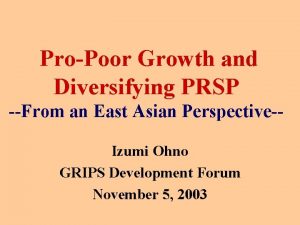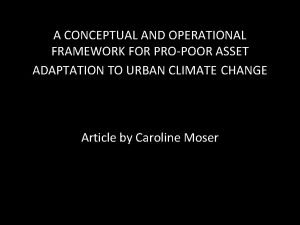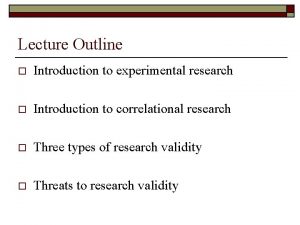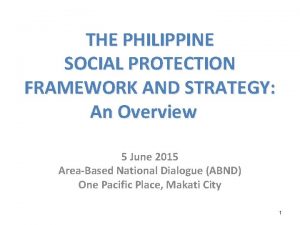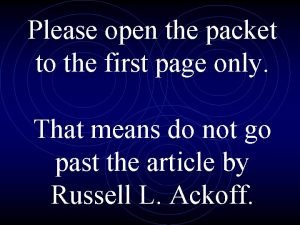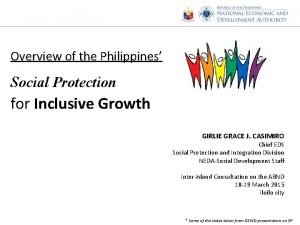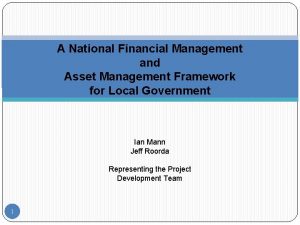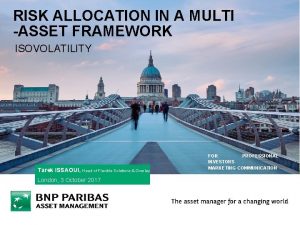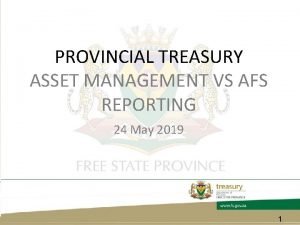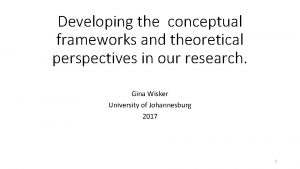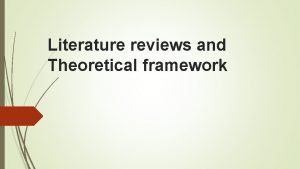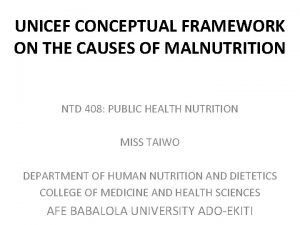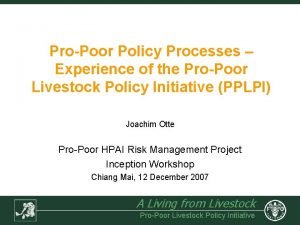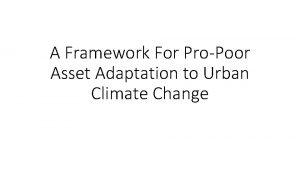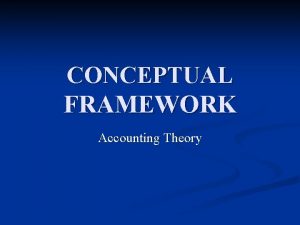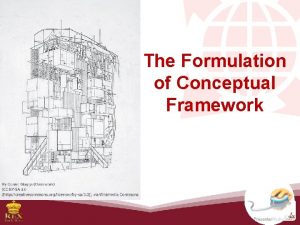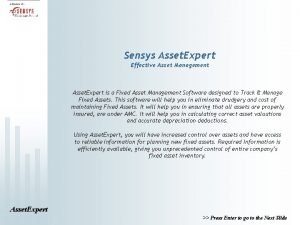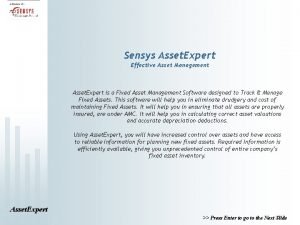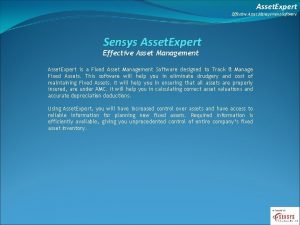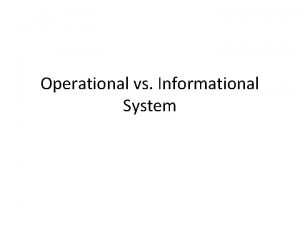A CONCEPTUAL AND OPERATIONAL FRAMEWORK FOR PROPOOR ASSET

















- Slides: 17

A CONCEPTUAL AND OPERATIONAL FRAMEWORK FOR PRO-POOR ASSET ADAPTATION TO URBAN CLIMATE CHANGE Article by Caroline Moser

ASSETFOCCUSED FRAMEWORK OPERATIONALLY ANALYTICALLY (MORE APPROPRIATELY ADDRESS) Immediate Postdisaster Response Long-term Resilience Pre-disaster Damage limitation PHASES OF URBAN CLIMATE CHANGE (IMPACTS ON POOR URBAN COMMUNITIES) Rebuilding VULNERABILITY (GROUPS MOST AFFECTED BY CC-RELATED DISASTERS – SOCIO ECONOMIC ASPECTS) ADAPTATION ASSETADAPTATION FRAMEWORK COMPONENTS (“BOTTOM-UP” & “TOP DOWN” CC ESTRATEGIES: ) FRAMEWORK (BETTER UNDERSTAND)

ASSET VULNERABILITY • Insecurity of the well being of individuals, households & communities including sensitivity to change (Morse 1998) • Lack of resilience to changes (environmental, economic, politic, social, etc. ) that threaten welfare • Lack of assets The more assets a society has, the less vulnerable it generally is. (visce versa)

What´s the definition of assets and what assets are associated with vulnerability and adaptation analysis?

THE MOST IMPORTANT CAPITAL ASSETS Assets are a key determinant of the society´s adaptive capacity both to reduce risks and to cope with and adapt to increased risk levels and they can be tangible or intangible.

ASSET-BASED ADAPTATION • Identifies the role of assets in increasing the adaptive capacity of low-income societies. • Includes 3 basic principles: – The process by which the assets held by individual are protected or adapted is influenced by external factors. – The formal and informal context within which actors operate can provide an enabling environment for protecting and adapting assets. – Assets can quickly move into security/vulnerability through society´s internal changes linked to life cycle as well as in response to external factors (economic, political and institutional variability)

AN ASSET-BASED FOCUS ON CC REQUIRES • Identification and analysis of the connection between vulnerability and assets • Identification of asset adaptation or resilience strategies to exploit opportunities to resist, or recover from the negative effect of climate change

VULNERABILITY ASSESMENT • Vulnerability Assessment = Hazards to which a society is exposed – its capacity to cope and adapt (the basis for response) • Vulnerability changes among social groups and population gender, ages, capacities, abilities, etc.

ASSET-VULNERABILITY ANALYTICAL FRAMEWORK PHASES OF URBAN CLIMATE VULNERABILITY CHANGE LONG-TERM RESILIENCE Lack of protective infrastructure necessary to reduce risk PRE-DISASTER DAMAGE Lack of knowledge and LIMITATION capacity to take immediate short-term measures to limit impact IMMEDIATE POST-DISASTER Lack of support from the state RESPONSE to cope with impacts REBUILDING Less capacity to adapt after disaster, less support from the state IMPORTANT ASSETS Physical assets Social assets Human, physical and social assets Rebuilding social and physical assets

ASSET-BASED ADAPTATION OPERATIONAL FRAMEWORK PHASES OF URBAN CLIMATE CHANGE ADAPTATION IMPORTANT ASSETS LONG-TERM RESILIENCE Establishing the infrastructure and Physical assets institutions that prevents CC´s impacts becoming disasters PRE-DISASTER DAMAGE LIMITATION Generating knowledge to greatly Social assets reduce loss of life, serious injury and loss of possessions, while also having the potential to moderate damage IMMEDIATE POST-DISASTER RESPONSE Promoting support for community Human, physical and social -action to cope with impacts assets REBUILDING Support from the state in rebuilding and transform the society Rebuilding social and physical assets

ASSET-BASED FRAMEWORK abc

METHODOLOGIES

BASICALLY…

LET'S IDENTIFY THE PHASES THROUGH THEIR OUTCOMES

LET'S IDENTIFY THE PHASES THROUGH THEIR OUTCOMES

FINALLY, HOW DO I UNDERSTAND THIS FRAMEWORK? • Diagnosis. - Current status of a society and its vulnerability • Proposed Model. - How this society should be organized (strategies) in its different levels (institutional and community) to face and adapt to urban climate change • Management Model. - The action planning implementation strategies (institutional and community levels) to achieve the proposed model.

WHAT WOULD I ADD TO THIS FRAMEWORK? • Diagnosis • Trend Model or Phase. - How this society would be in its different levels (institutional and community) if no actions (strategies) were taken • Proposed Model • Management Model
 Propoor
Propoor Propoor
Propoor Conceptual and theoretical framework example
Conceptual and theoretical framework example Conceptual research examples
Conceptual research examples Theoretical framework
Theoretical framework Conceptual framework vs theoretical framework
Conceptual framework vs theoretical framework Operational definition in research examples
Operational definition in research examples Social protection operational framework philippines
Social protection operational framework philippines Operational framework in research sample
Operational framework in research sample Social protection operational framework philippines
Social protection operational framework philippines National asset management assessment framework
National asset management assessment framework Multi-asset framework
Multi-asset framework Asset management framework national treasury
Asset management framework national treasury Iot conceptual view
Iot conceptual view Conceptual and theoretical framework
Conceptual and theoretical framework Third level of conceptual framework
Third level of conceptual framework Literature review and theoretical framework
Literature review and theoretical framework Unicef conceptual framework of nutrition
Unicef conceptual framework of nutrition
